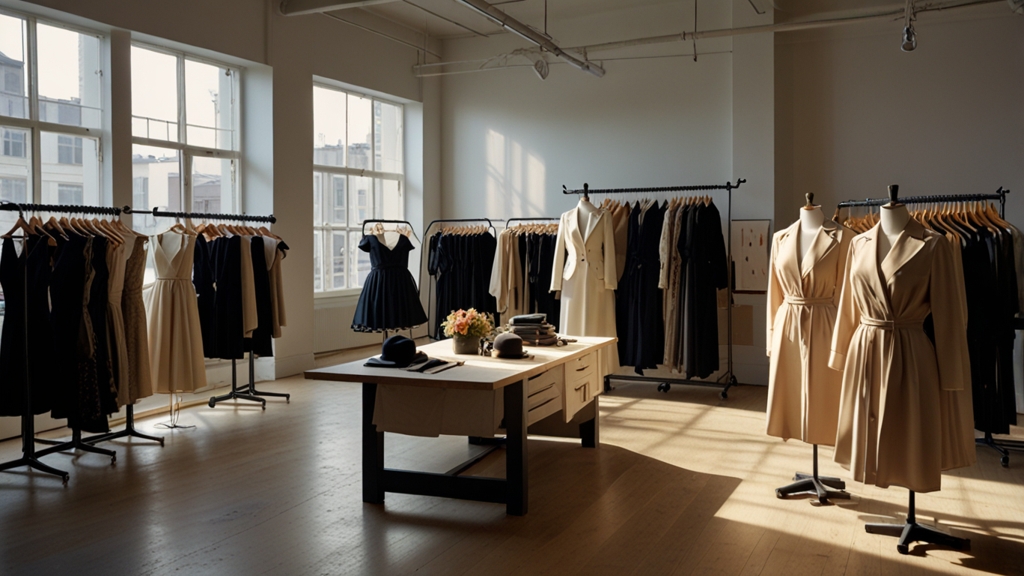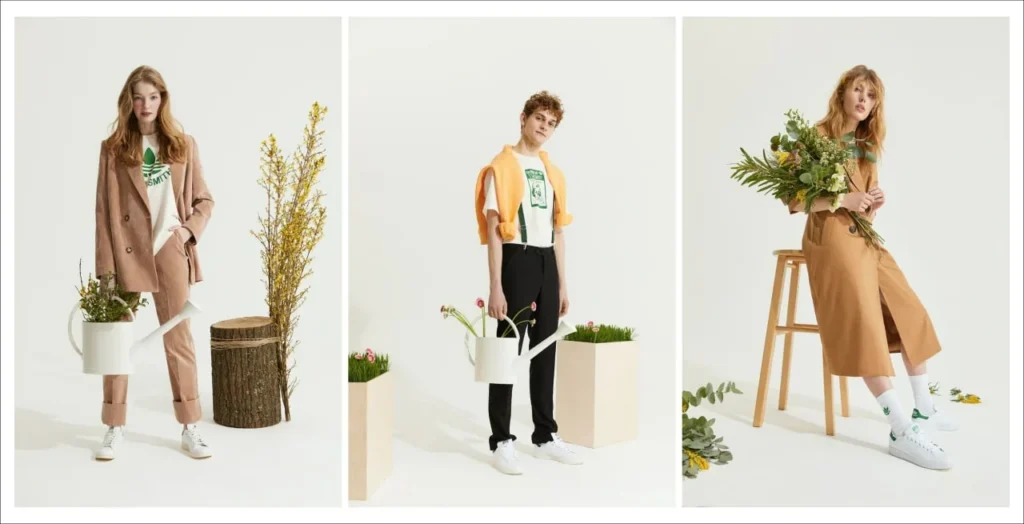The fashion industry produces a staggering 80 billion clothing items each year worldwide, yet all but one of these items never become new garments through recycling. This reality reflects the industry’s complex nature where designs, manufacturing, and sales span multiple continents.
Fashion news typically highlights the industry’s glamorous aspects, but successful designers follow specific principles that drive their achievements. The world’s leading fashion capitals – New York, Paris, Milan, and London – operate on unwritten rules that determine a collection’s fate. We’re now revealing these closely guarded secrets that have built the world’s most prestigious fashion houses.
A carefully calculated balance – the 90/10 proportion rule – lies at the heart of every successful fashion collection. Top fashion designers know that memorable collections come from striking the right balance between statement pieces and basics.
A simple yet powerful principle drives iconic collections: 90% basics paired with 10% statement pieces. This ratio lets signature pieces shine without overpowering the overall look. A bold designer bag or striking earrings naturally pair with understated classic blazers and well-fitted jeans.
Great designers know that balance goes beyond individual pieces. The most eye-catching outfits follow the golden ratio of approximately 1:1.61. This mathematical principle helps designers create collections that naturally catch the eye and feel balanced.
Studies covering 50 years of women’s fashion show that successful designs mostly use a 35/65 vertical proportion. The horizontal proportions mostly fall into the 50/50 category, which creates timeless, well-balanced silhouettes.
Proportion shapes how clothes work with the human form. Designers focus on three key balance elements:
- Symmetrical Balance: Similar elements on both sides create formal harmony
- Asymmetrical Balance: Contrasting visual elements achieve equilibrium
- Rhythm: Pattern and color repetition guide the eye naturally
Donna Karan showed brilliant proportion use in her groundbreaking collection. Women made up 45% of the American workforce by 1990. Karan responded with an innovative mix-and-match collection. Her designs combined well-proportioned pieces – tailored jackets, cashmere sweaters, wrap skirts, and classic white shirts – that moved naturally from day to night.
Helmut Lang’s collections showed exceptional skill with proportions by creating a unified language between men’s and women’s clothing. His designs proved that perfectly balanced proportions surpass gender boundaries and leave a lasting mark.
Today’s designers apply these principles through:
- Form and Function: Claire McCardell and Bonnie Cashin’s legacy lives on as silhouette proportions serve both style and practicality
- Limited Palettes: Color restrictions keep collections cohesive and let proportions take center stage
- Technical Precision: Wide hems match wide waistbands while thin ties complement thin binding to create visual harmony
Current fashion news shows these proportion rules remain vital. Collections appear disjointed when designers ignore these fundamental principles. Those who become skilled at the 90/10 rule and golden ratio consistently create collections that appeal to audiences and stand time’s test.
Color acts as a quiet force in fashion design that reaches way beyond the reach and influence of esthetics. Research shows that picking the right colors increases brand recognition by 80%, which makes it a vital part of fashion success.
Fashion designers employ color’s emotional power to influence how consumers behave. Each shade plays a specific role instead of being picked at random. Red builds confidence and energy, blue creates trust and reliability, while yellow naturally boosts optimism.
The most successful designers build their collections around proven psychological triggers. They know that light colors reduce dark ones’ impact, which lets them build visual hierarchies in their designs. Designers guide viewers’ emotions through careful color arrangements.
“True style is knowing the rules—and when to break them.”
Color forecasting science relies on five key elements: social changes, tech advances, history’s influence, buyer behavior, and state-of-the-art developments. Color Marketing Group®, a leading forecasting organization, runs intensive four-day meetings where color experts from all industries debate and vote on upcoming trends.
These sessions help professionals analyze:
- Cultural shifts and social media patterns
- Runway shows and street fashion
- How consumers think and buy
- What colors technology can produce
WGSN and Coloro lead the industry by turning this knowledge into practical color predictions. Their forecasts strike a balance between change and comfort, digital appeal and real-world experience.
The unspoken rule of limiting palettes to ensure commercial success
Though designers can access endless color choices, successful ones think over restricting their palettes. The industry secret lies in using no more than three to four colors to keep the brand consistent. This limit serves several goals:
The right palette creates a unique visual identity on business cards, websites, and social media. It helps keep collections unified. The approach will give a commercial edge by making products easier to mix and match.
Leading designers also think about the technical side of color production. They cooperate with color experts to get precise shade matches while cutting down waste. This detailed attention ensures finished products deliver their intended emotional effect.
Fashion news rarely talks about these calculated decisions behind color choices. In spite of that, learning about color psychology remains vital to create successful collections. Research shows 52% of shoppers leave websites because of poor esthetic choices, which proves thoughtful color selection directly affects commercial results.
Fabric Selection: The Hidden Foundation of Luxury Design
Fabric is the life-blood of luxury fashion that shapes design excellence. Industry experts say fabric choice determines not just how a piece looks but also its durability, exclusivity, and value.
Why fabric sourcing happens before sketching begins
The best fashion designers know great garments start with the right materials. They start by choosing fabrics because the material’s weight, texture, and drape guide their creative direction. Studies show nine out of ten successful designers pick their fabrics before they start drawing.
Designers look at several key factors:
- What the material is made of and how it affects the environment
- How long it takes to make
- Whether it works for the season
- How it affects the final price
The touch test that determines a fabric's worth
The traditional touch test remains vital even with today’s advanced technology. High-end fashion houses use advanced Fabric Touch Testers (FTT) to measure several physical properties at once. These tests look at:
- How the fabric compresses and bends
- The texture and friction of its surface
- Its heat-related properties
- Overall comfort levels
Research shows comfort tops the list when people decide what clothes to buy. That’s why designers carefully check how fabrics feel – it directly relates to quality and how happy people are wearing them.
How designers secretly recycle fabrics between seasons
Fashion designers have created new ways to recycle fabric as environmental concerns grow. Right now, all but one of these garments collected through take-back programs avoid recycling. The leading designers have created their own recycling guides based on three main ideas:
They start by cutting down waste through smart fabric choices. Next, they look for ways to reuse materials with advanced closed-loop recycling tech. Last, they use smart sorting systems to identify materials, which helps turn used clothes into new collections.
The fashion world faces big challenges with textile recycling because 60% of modern clothes contain plastic. Still, forward-thinking designers create trailblazing solutions through:
- New materials and circular design ideas
- Better recycling systems for different types of waste
- New standards for closed-loop recycling
Recent fashion news shows luxury brands focus more on sustainable fabrics without losing quality. This transformation shows they understand that great design starts with smart material choices, which builds the foundation for lasting fashion excellence.
The Silhouette Formula Used by Every Successful Designer
Mathematics builds the foundation of every successful fashion design. Pattern making, once seen as purely technical, now serves as a crucial tool to create garments that appeal to a variety of body types.
Why designers create a signature silhouette first
Successful designers know that silhouettes are the backbone of style. These silhouettes define garment outlines and their relationship to body structure. Designers start by creating a signature silhouette that shows their design philosophy. Marc Jacobs explains, “Sometimes the silhouette drives the collection. Sometimes it’s a mix of fabrics. Sometimes it’s both”.
Advanced grading techniques help designers adapt each silhouette for many body shapes while keeping its core features. This method helps maintain consistency in collections and arranges new styles with their design language.
How proportions are manipulated to flatter different body types
Proportion manipulation relies on three key elements:
- Digital pattern making for precise adjustments
- 3D modeling technology for virtual fittings
- Live collaboration between designers and fit technicians
These technologies simulate fabric behavior on bodies of all sizes to create the perfect fit. Designers improve natural body features by carefully adjusting vertical and horizontal proportions.
The mathematical principles behind seemingly artistic designs
A complex mathematical framework exists beneath fashion design’s artistic surface. Advanced technologies make shared work between designers and fit technicians possible, which ensures optimal fit for all sizes. Each garment needs precise calculations for:
Points of measure serve as standards, including:
- Neck opening dimensions
- Sleeve length specifications
- Hip and waist circumference measurements
- Inseam calculations
Grade rules are the mathematical methods that determine measurement changes between sizes. These rules need complex equations that factor in multiple dimensions. Technical designers carefully adjust these rules for every piece to ensure consistent sizing from XXS to 3X.
Recent fashion news shows designers increasingly adopt mathematical precision in their creative process. Advanced digital technologies help create virtual models that simulate fabric behavior. Designers can perfect proportions before production begins. This blend of artistry and mathematics creates garments that look stunning and fit perfectly on a variety of body types.
Industry Relationships That Make or Break Fashion Careers
Professional networks drive success in the fashion industry more than talent alone. Research shows 50-80% of fashion industry positions come through professional networks. These connections play a substantial role in career growth.
The unwritten rules of networking in fashion circles
Fashion professionals need a smart approach to build meaningful relationships. Networking goes beyond just swapping business cards – it builds genuine connections that grow throughout your career. Top fashion professionals suggest setting aside weekly time to connect with colleagues, which becomes even more important with remote work.
Fashion industry veterans highlight three networking fundamentals:
- Building communities outside the usual workplace
- Keeping relationships strong as careers progress
- Making connections outside your specialty area
Fashion designers know peer relationships naturally evolve over time – today’s interns could become tomorrow’s industry leaders. These connections are a great way to get new opportunities and navigate career changes.
How designers secure celebrity endorsements without paying
Smart strategies and real relationships help designers get celebrity endorsements without direct payment. Gifting suites at major events like the Oscars, Grammys, and Super Bowl let designers showcase their work to A-list celebrities. The costs typically range from a few thousand to tens of thousands of dollars for suite space and promotional materials.
Designers who succeed at these events:
- Create eye-catching product displays
- Give customized experiences
- Make strategic follow-ups
- Stay active with social media mentions
Many designer-celebrity relationships show this works well. Riccardo Tisci’s early backing of Kim Kardashian West led to several high-profile projects. Saint Laurent’s connection with Rosé shows how authentic relationships can grow into powerful brand partnerships.
The power dynamics between designers and fashion editors
Designer and fashion editor relationships rank among the industry’s most significant partnerships. Both sides need mutual respect and understanding. Editors control editorial content while designers bring their creative vision.
Fashion editors run tight schedules, especially during fashion weeks. They often see their partners briefly in the morning or squeeze in quick coffee meetings between shows. Designers must communicate smartly and respect time limits.
Strong designer-editor relationships thrive on:
- Clear, consistent communication
- Understanding what editors want
- Respecting creative limits
- Smart use of social media
These power dynamics matter more as fashion news shapes market trends and consumer choices. Smart designers know good relationships with editors will substantially affect their brand’s visibility and industry success.
Conclusion
Fashion design goes well beyond seasonal trends and creative instincts. Our research into the industry’s best-kept secrets shows how top designers combine artistry with science to create lasting influence.
Successful collections rely on the 90/10 proportion rule. Smart color choices build emotional connections that lead to commercial success. The foundation of luxury design starts with fabric selection. This choice determines both the look and durability of each garment. Designers use mathematical precision to create silhouettes that flatter bodies of all types.
Building genuine relationships might be the most important factor for success in fashion. Raw talent matters, but real connections with editors, celebrities, and other designers often separate thriving brands from those that disappear.
These unwritten rules tell us something deeper about fashion design. Long-term success comes to those who excel at both technical skills and human connection. The world’s top fashion houses focus on these timeless principles instead of chasing passing trends.
FAQs
Q1. What are some examples of “quiet luxury” brands that wealthy people prefer? Some examples include Loro Piana for clothing, John Lobb for custom shoes, and Holland & Holland for high-end hunting gear. These brands are known for exceptional quality and craftsmanship rather than flashy logos.
Q2. How do truly wealthy people approach fashion differently from those trying to appear rich? Wealthy individuals often prefer custom-made or bespoke items without visible logos. They focus on quality materials, perfect fit, and subtle style rather than prominently displaying brand names.
Q3. What role do tailors play in luxury fashion for the wealthy? High-end tailors, especially those on Savile Row in London, are crucial for creating custom-fitted clothing for wealthy clients. Many affluent individuals prefer having their clothes made to measure rather than buying off-the-rack items.
Q4. Are there secret shopping experiences available only to the ultra-wealthy? Yes, some luxury brands offer invite-only memberships or private shopping experiences for their most elite clients. These can include personal stylists, exclusive collections not available to the public, and VIP treatment.
Q5. How do wealthy people approach luxury travel differently? Ultra-wealthy individuals often use exclusive travel clubs or services that offer personalized experiences, such as private jet travel, access to luxury villas not available to the public, and bespoke itineraries tailored to their specific interests and needs.




